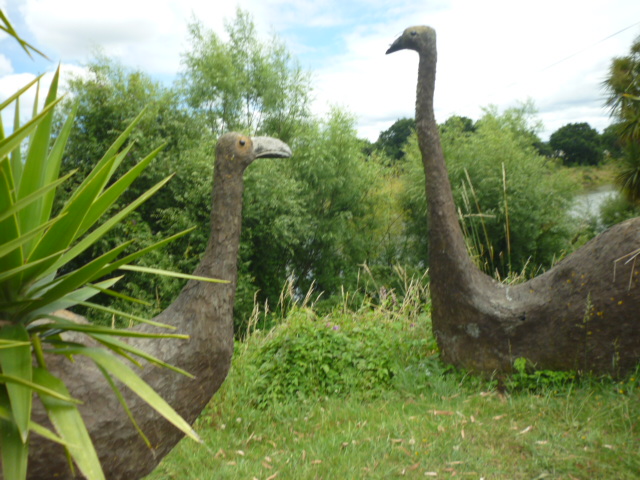In Memory of an Extinct New Zealand Bird
By Val
@valmnz (17099)
New Zealand
January 1, 2018 7:15pm CST
Yesterday I wrote about our New Year picnic site at Upokongaro, up river from Whanganui on the coast. Today's photo is of the same site, just a different view.
These birds are life size sculptures of the moa, a large flightless bird that roamed the forests of New Zealand about 500 years ago. They were from the same bird family as emus, ostriches and New Zealand's smaller flightless bird, the kiwi. Because of their size and inability to fly, moa made good targets and were hunted to extinction by the Maori people. The flesh was used for food, the bones for fish hooks and pendants and the skin and feathers used for clothes.
These moa sculptures represent a discovery of thousands of moa bones discovered in a nearby valley by a team from the Whanganui Museum in the 1930s.
They're rather life-like don't you think!
11 people like this
8 responses
@allen0187 (58444)
• Philippines
2 Jan 18
They are life-like! I wonder if any DNA of these birds were kept. It would be good to have moa birds roam New Zealand once again.
2 people like this
@allen0187 (58444)
• Philippines
2 Jan 18
@valmnz it makes you wonder if such animals still exists, how humans will treat it?
1 person likes this
@JudyEv (325759)
• Rockingham, Australia
2 Jan 18
They are certainly well done. At least when they killed one they didn't waste half of it.
@JohnRoberts (109857)
• Los Angeles, California
2 Jan 18
Yes, they are very realistic looking.
1 person likes this







 Still sad they are gone.
Still sad they are gone.







